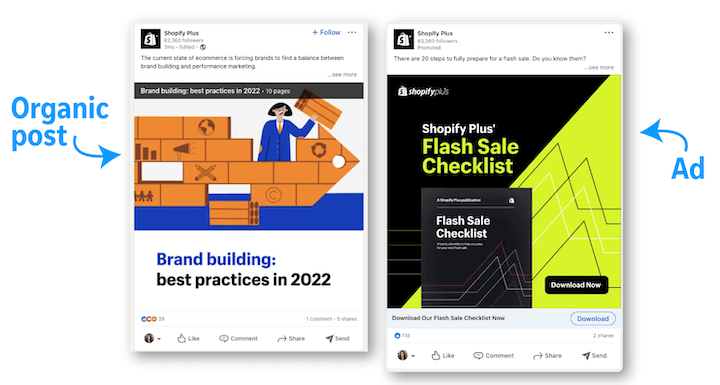
Getting your name out there through effective TV advertising is an excellent way to increase your business's profile, arouse the attention of your target demographic and potentially drive sales. It can be difficult to create and promote a successful advertising campaign. There are many strategies, tools, and tools available to help you achieve your goal.
A good first step is to figure out what your market is. Once you identify your market, it is possible to start brainstorming creative ways to get people to interact with your brand. If you have an online store, you can leverage your advertising campaign to increase sales or attract new customers.
Measuring television advertising is a good way to ensure that your ads are getting their fair share of attention. One of the many available tracking systems can help you to determine which ads have the best return. These tracking systems will give you detailed reports on how your ads are performing and the most important metrics. Analytics tools can be used to determine which spots generate the most attention and how often they are shown.

While there is no silver bullet when it comes to measuring the effectiveness of your TV ads, you can find out which spots are generating the most eyeballs with the most bang for your buck. You can then optimize your advertising efforts in order to maximize your ROI.
TV advertising campaigns have one advantage: they are highly targeted. This allows you to target specific audiences. Like other forms advertising, many viewers will see your ad and not skip it. In fact, some viewers will binge-watch their favorite shows on a TV without a break. Your ad may have more success with them than other media.
A TV advertising campaign can be quite expensive. Your equipment, editors, and performers are all included in the cost of creating your TV ad. Additional costs include the cost of your performers, editors, and equipment. You also have to pay for airtime. But, if your ad is priced well, you could save money.
You need to identify the right audience and then find a way of reaching them. Social media is one way to achieve this. This allows you to gauge the buzz surrounding your brand via conversations on social media.

To ensure success, you should choose a smaller but more focused group of people. Another trick is to find a niche that is a little less saturated. This can avoid your ad appearing on too many channels that don't appeal to your niche.
FAQ
How do I choose my target market?
Begin by talking to yourself and people close to you. Do you not know where to start? Ask yourself "Whom do I want to reach?"
Ask yourself these questions: Who are the most influential people in my industry? What are the problems they face daily? Which people are the most intelligent in my industry? You can find them online.
Rewind to the beginning, when your business was founded. What motivated you to start your business? What problem did you solve for yourself, and how did you do it?
These answers will help you identify who your ideal clients are. This will allow you to learn more about your ideal customers and their motivations for buying from you.
It is also possible to look at the websites and social networks pages of your competitors to get insight into who they cater.
Once you have identified your target customers you will need to choose the channel to reach them. If your company offers services to real estate agents you might make a website that targets home buyers.
A blog that targets small-business owners could be a possibility if you are a software provider.
A Facebook page for teens could be set up if you are a clothing seller. You could also set up a Twitter account if your restaurant is a business owner to help parents find kid-friendly restaurants.
This is the point: There are many ways to communicate your message.
Radio advertising: What are your options?
Understanding the interactions between different media is essential. Remember that media can complement each other and are not necessarily competitive.
Radio is best used as an extension of television advertising. Radio can complement TV advertising by reinforcing key messages, and providing additional information.
TV commercials are often too long for radio listeners. Radio ads are usually shorter and less expensive.
What is the cost of advertising on social media?
If you decide to go this route, you should know that social media advertising is not free. You will be charged monthly depending on your time on each platform.
Facebook: $0.10 per 1,000 impressions
Twitter: $0.20 per 1,000 impressions (if your tweet is on Twitter)
Linkedin - $0.30 for 1,000 impressions if your send out invitations
Instagram - $0.50 per 1,000 impressions.
Snapchat - $0.60 for 1,000 impressions ($0.40 Per User)
YouTube - $0.25 for 1,000 views
Tumblr: $0.15 per 1,000 impressions of text posts
Pinterest - $0.05 per 1,000 impressions per month
Google + $0.15-$0.20 for 1,000,000 impressions
Tumblr - $0.15- $0.20 per 100,000 impressions
Vimeo - $0.20 to $0.25 per 10,000 impressions
Soundcloud: $0.20-$0.25 Per 1 Million Plays
StumbleUpon - $0.20 -$0.25 per 1 billion pageviews
Digg - $0.20 - $0.25 per 1000 diggs
Reddit: $0.20-$0.25 for 1000 comments
Wordpress - $0.20 - $0.25 for 500 comments
Flickr - $0.20 -- $0.25 per 5,000 photo uploads
What is the basic purpose of advertising?
Advertising is not just about selling products; it's also about creating an emotional connection between you and your customers.
Advertising is about communicating your ideas and values to people who already care about what you have to say. Advertising is about changing people's minds and attitudes. It's all about building relationships.
It is all about making people feel good.
If you don't understand your customers' needs, you can't market to them.
Before you begin any advertising campaign, it is important to understand your customers' needs, wants, and buying patterns.
This will allow you to create ads that resonate with your target audience.
Is it possible for traffic to be free?
Free traffic refers to traffic which comes directly from organic search results. This type is known as natural, or organic traffic. There are many options to get free traffic like article marketing and social media marketing.
Article Marketing is a popular way to get traffic for free. It has an extremely low cost-per-click (CPC). The CPC is usually very cheap compared to paid ads. Article marketing is also called content marketing.
Social Media Marketing - These social media sites, such as Facebook, Twitter or LinkedIn, allow you to advertise your business. You can use these platforms to post updates, share photos and build relationships with people who may become potential customers. Many businesses decide to purchase advertising space on social media sites to reach a wider audience and at a much lower cost.
Blogging - Another great way to generate traffic is blogging. Quality content that is enjoyable to read will attract people. After you attract visitors to your blog, you can make money by selling products or other services.
Email Marketing – Email marketing has been around ever since the dawn of the Internet. However, it remains one of your best methods to drive traffic to you website. Regular email marketing is a great strategy to increase your subscribers and ultimately sell something.
Advertising: What is it?
Advertising is an artistic art form. It's not just about selling products. It's about making emotional connections between people, brands, and each other.
Advertising is about sharing stories and using images for ideas.
You must communicate clearly and persuasively. Your target market should be able to relate to the story you tell.
Advertising is therefore distinct from other forms communication such as writing and public speaking.
You are building a brand identity when you run a successful advertising campaign.
This is how you are memorable. You become someone that people remember.
What is the best way to advertise online?
Internet advertising has become an integral part any business strategy. It is a cost-effective way for companies to reach potential customers. There are many forms of internet marketing. Some are completely free while others require payment.
You can also advertise online using banner ads, pop up ads, search engine optimization, pay-per-click advertisements (PPC), social media marketing (e-mail marketing), and mobile marketing. Each method comes with its own set of advantages and disadvantages.
Statistics
- It's 100% reliant on your website traffic. (quicksprout.com)
- This means that at least 50% of an ad needs to be shown on the screen for at least one second. (quicksprout.com)
- Google will display whichever ad type (CPM or CPC) is expected to earn more revenue for the publisher, which is in Google's best interest since they take a 32% share of the revenue. (quicksprout.com)
- Advertising's projected distribution for 2017 was 40.4% on TV, 33.3% on digital, 9% on newspapers, 6.9% on magazines, 5.8% outdoor, and 4.3% on radio. (en.wikipedia.org)
External Links
How To
How do I advertise on Google?
AdWords allows companies to purchase ads based on specific keywords. Your account is the first step. Select a campaign name and set the budget. Choose the ad type (text or image), and add keywords. Next, you will bid for those keywords. When someone clicks one of the ads you place, they pay only if that click comes from someone who searched with one of your targeted keywords. This ensures that you are paid even if people do not buy anything.
Google offers many tools to help ensure that your ads are effective. They include Keyword Planner, Ads Preferences Manager, and Analytics. These let you determine which strategy is best for you business.
The keyword planner will help you decide which keywords you should use in your campaigns. It can help you decide whether or no to spend money on certain keywords.
To change settings such as the maximum number per day or the minimum cost per Click, you can use Ads Preferences Manager
Analytics allows to track your ads' performance and compare it with other campaigns. You can view reports that show how your ads performed in comparison to other ads.